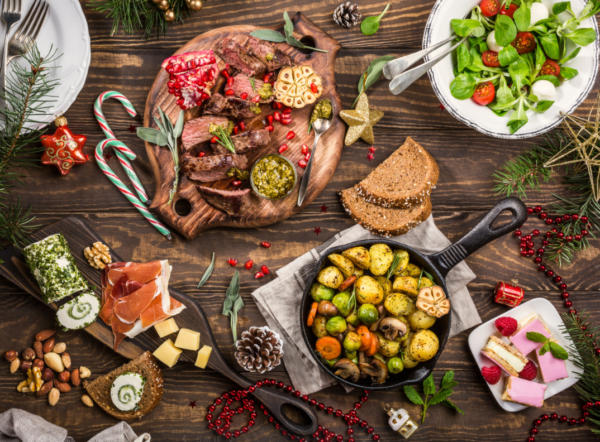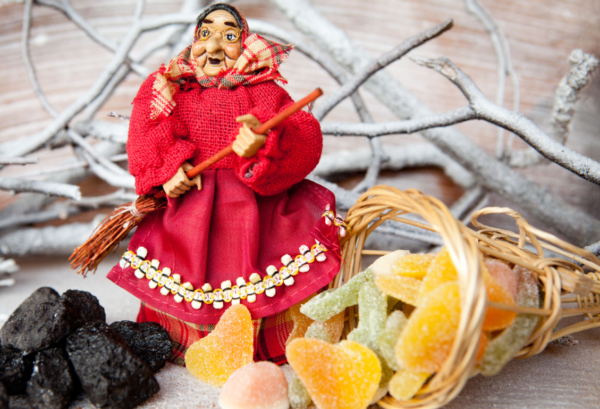In many cultures, the coldest season is typically a time of celebration, with traditions varying from one country to the next. These celebrations are designed to light up the dark, provide something to look forward to and boost moral in the trying months, often involving themes of food, light and/or togetherness as we gather together to shake off or reclaim the winter.

In Australia, the population come from a blend of cultures and ethnic backgrounds, so their winter celebrations reflect a mixture of many different elements. However, despite December falling in Australia’s summer, Christmas is still celebrated and even features themes of fake snow. Trees are still decorated, carols are sung and gifts are exchanged; Father Christmas just has to wear sunscreen.
In China, approximately two percent of the population observes Christmas as a religious holiday, although the expectation is that this number will rise as it gains popularity. The main winter festival is the celebration of New Year that occurs at the end of January. This is often known as the Spring Festival and, like Christmas, is a time for gift-giving and feasting with family. During this, ancestors are worshiped, which is why you will find portraits and paintings of late relatives in every home.
Denmark’s main event is the Christmas Eve dinner. Part of the meal is the traditional rice pudding, which is baked with a single almond inside. Whoever gets the almond during serving is said to have good luck for the coming year. Danish children also leave a glass of milk out for the Juulnisse, shy elves that reside in homes, and for Julemanden, their version of Santa Claus.
The Finnish people also have a large feast on Christmas Eve, consuming the leftovers on the 25th December. On the 26th, it is a time for visiting friends and family, with many Glogg parties taking place. This involves the drinking of a mulled wine (Glogg) made from Madeira whilst consuming baked treats.
Whilst Christmas is not a major holiday in Greece, Greeks recognize St. Nicholas as the patron saint of sailors. Hearth fires burn between the 25th December and 6th January, with a sprig of basil wrapped around a wooden cross to protect homes from the Killantzaroi – negative spirits that are only active for the twelve days after Christmas. There are, however, gifts exchanged on the 1st January (St. Basil’s Day).
India’s Hindu population famously brightens up the dark with Diwali, the festival of lights, during which families will place clay oil lamps on their rooves in honour of the return of the sun. Meanwhile, their Christian neighbours celebrate Christmas by decorating mango and banana trees and adorning their homes with red flowers. Whilst gifts are exchanged, it is also tradition to give to the poor.
The Italians have perhaps some of the more diverse traditions, celebrating the Legend of La Befana, a kind old witch who travels the world delivering gifts to children. The tale goes that on their way to Bethlehem, the three Magi asked her for shelter, but she rejected them. Later, realizing how rude she had been, she tried to find them but they had gone, and so she roams the Earth searching for them and delivering gifts on her journey.

In Romania, winter celebrations are often linked with an old fertility ritual, as a way of looking to the coming spring. The tradition starts with a woman baking a confection called a Turta: as she kneads the dough, her husband goes outside and moves from one barren tree to the next, threatening to cut them down. Each time he does, she begs him to spare the tree, saying ‘I am sure this tree will be as heavy with fruit next spring as my fingers are with dough today’. She then finishes baking the Turta and the trees are spared.
The big holiday in Scotland is Hogmanay, which is observed on the 31st December, with celebrations usually spilling over into January. One tradition during this time is known as “first-footing”, in which the first person to cross the threshold of a home brings the residents good luck for the coming year. However, they must be dark-haired and male. This tradition comes from a time when the Norsemen were invading Scotland, meaning that someone entering with red or blonde hair was probably a Viking.
These are just some of the traditions from around the world, and there are many more being observed over the coming weeks. If you find yourself in a different country over the Christmas period, the best advice is to embrace the festivities and enjoy yourself, as you will most certainly be made welcome!







